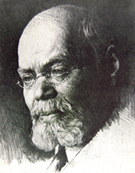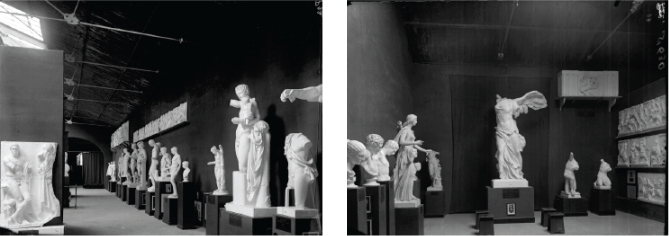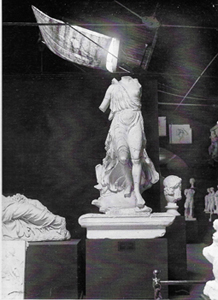
MUSEUM OF CLASSICAL ART, La Sapienza University, Rome
History of the Plaster Cast Gallery up to the period in which it was directed by Mariani and later transferred to La Sapienza

Emanuel Löwy, the first professor of Archaeology and History of Art at the University in Italy, founded aplaster cast gallery for the University of Rome in 1892, coming across considerable difficulties, untilhe received support from Ferdinando Martini, Public Education Minister in the first Giolitti government. The Austrian academic aimed to enrich his teachings with new didactic tools, like a collection of casts of Greek sculptures and Roman copies thatcould be examined by students. He drew inspiration from the tradition of German university plaster cast galleries, where casts had become a means of historic representation of different phases of ancient art. The earliest university collections in Germany date back to the latter half of the 18th century. During the late 19th century, plaster cast collections were present in all major European and American Universities.
The “Museo di Gessi” of La Sapienza was initially located in a few rooms of a building in the Testaccio district of Rome, on via Luca della Robbia. From 1892-1893 it contained casts from the Institute of Fine Arts, whereas others were created by the Parisian atelier of Eugène Arrondelle, the London-based atelier of Brucciani and the laboratories of museums of Berlin and Naples, as well as private moulders in Rome. We have in our possession a first inventory of the Museum, drafted between 1894 and 1895, and we have knowledge of its contents between the 19th and early 20th century, from images obtained from photographic plates of that period.

In 1903 the museum was able to acquire over two hundred and seventy casts obtained from moulds which belonged to the moulder Napoleone Martinelli. Another fundamental expansion is linked to the 1911 Archaeological Exhibition, which was held on the occasion of the fiftieth anniversary of the Kingdom of Italy at the Museo Nazionale Romano. Greece also participated in the event and exhibited several casts including those of the Korai discovered during the excavation of the Acropolis, which first began in 1885-1886. Permission for their reproduction was granted exclusively for this occasion, because the remains of polychromy had already practically vanished. After the Exhibition the Greek government donated these casts to the Museo Nazionale Romano, where they were stored for two years, until they were logically assigned to La Sapienza plaster cast gallery.

Emanuel Löwy was forced to resign as professor in Rome when Italy entered the First World War, in view of his Austrian citizenship. Lucio Mariani was summoned as his replacement, both as professor and Museum director. In February 1916, together with his assistant Giulio Quirino Giglioli, Mariani received the a last group of plasters on behalf of the Museum, from the 1911 Archaeological Exhibition. Over the following few years he continued to work as Museum director, albeit limited by his health. At the time, the plaster cast gallery contained over 700 casts and the collection continued to grow, until it became necessary to search for a new site.
After Mariani's death and upon the initiative of the Rectorate, in 1925 the museum was moved to a few halls in the Istituto di S. Michele. Giulio Emanuele Rizzo, full professor and newly appointed museum director, was entrusted with the task of arranging artefacts in spaces which were entirely inadequate for a constantly expanding collection. A few years later, with the construction of the new university campus, a definitive location for the plaster cast collection was identified on the lower ground floor of the building of the Facoltà di Lettere e Filosofia. The Museum came to be known as the Museum of Classical Art.